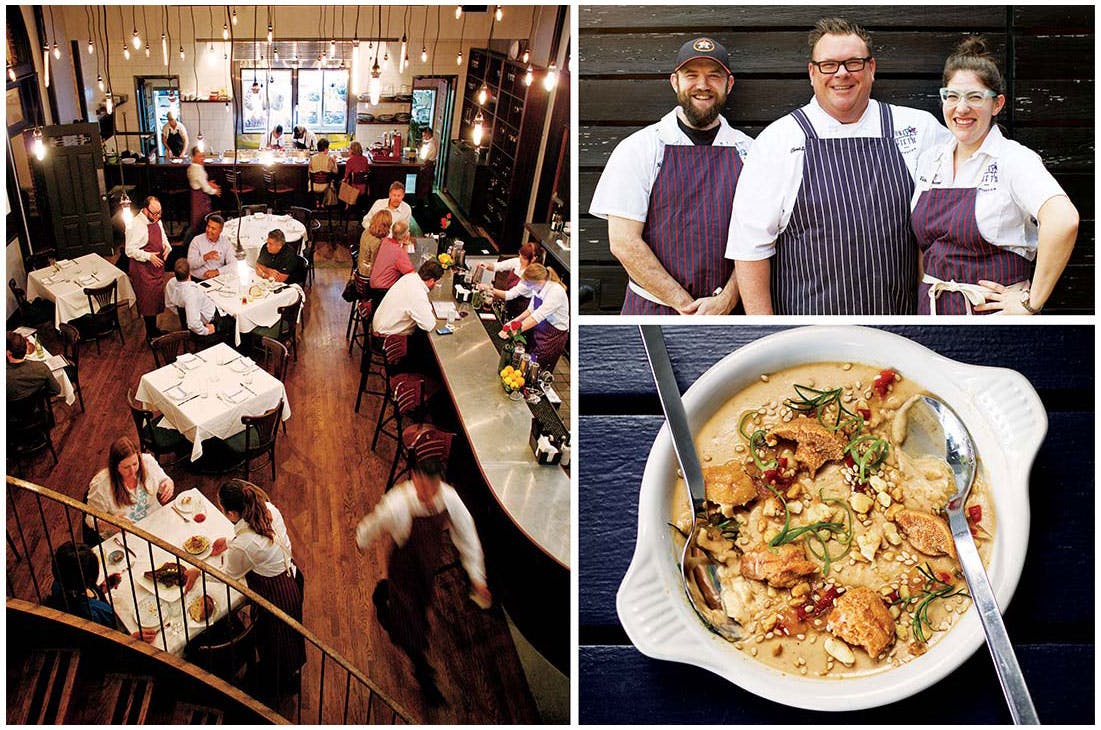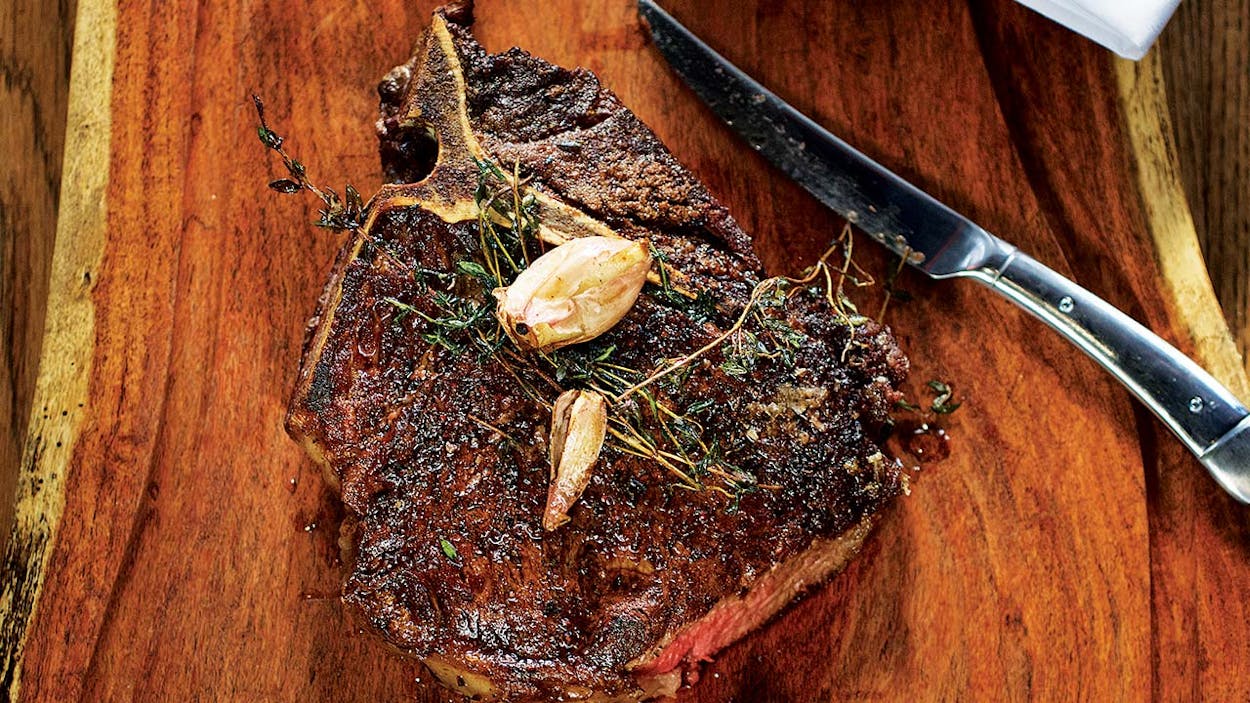Chris Shepherd had a problem. The 44-year-old chef-owner of Underbelly, the most famous restaurant in Houston, had been offered a lease on a hot property in the eclectic Montrose neighborhood, but it came with conditions. “They wanted me to do a restaurant for a couple of years,” he says. He wasn’t interested. “I told them that wasn’t enough time to pay back the initial investment, but what I would do is open a different restaurant every year for five years.” Everyone, including his business partners, thought he was crazy. He was undeterred. “It would be like this petri dish,” he says. “No, wait, that’s a terrible metaphor. It would be a great experiment!” Long story short, the first of the five restaurants, One Fifth Steak, opened in January. On July 31 it will close, and during August, the decor will be tweaked and the cooks and servers will master a new menu, wine list, and cocktail selection. At the beginning of September, One Fifth Romance Languages will debut, serving the food of France, Italy, and Spain. In 2018, One Fifth Fish will open. As for the remaining two, Shepherd says,“I have no idea.” But he is confident he will figure it out when the time comes.
All this is on my mind as three friends and I take our seats in the gracious old church that for years was the home of much-celebrated Mark’s American Cuisine. From long-ago visits I remember a soaring space, leaded glass, and terra-cotta-colored walls. Well, that was then and this is now. Today, abstract art fills the gothic arches; a dropped ceiling sports splashy multicolored panels; filament lights dangle from black cords.
The four of us are still discussing the changes when a waitress appears bearing a small oil lamp and a lighter. In a minute she’s back with a loaf of rustic bread. She lights the lamp and says, “This is for you to dip your bread in.” Our faces are utterly blank. “It’s beef tallow,” she explains, “with Meyer lemon and herbs and vinegar.” Ohhh. The crusty bread is fantastic, and the liquefied tallow is as mild as olive oil. Rendered in-house, it’s part of Shepherd’s commitment to sustainable butchering.

Our appetites temporarily appeased, we peruse the menu. It’s a lusty document, and it doesn’t really care that you just started a diet. We’re immediately drawn to two starters that must contain at least a thousand calories apiece. One is the grilled bread with chicken liver pâté, a butter-and-cream bomb. But the real stunner is the uni panna cotta, a satiny custard topped with quivering lobes of the shellfish and a piquant Fresno-chile gastrique.
Because of the awkward kitchen that comes with being in an old building, One Fifth has rejected the massive high-tech broilers that big steakhouses often use. Instead, Shepherd is fond of wood-burning ovens and cast-iron pans. “It’s the way I would cook if you came to my house,” he says. We’re debating which steak to get when we see something that looks straight out of a medieval banquet: four servers bearing a single long board laden with multiple cuts of meat, twice-baked potatoes, and God knows what else. I momentarily wish I had invited eight people, but in the end, we’re happy with our 32-ounce dry-aged, bone-in Angus strip. It turns out to be a perfect steak to share, with a fatty strip on one side and a bonus lean loin on the other. The cooking is spot-on, and while my steak-freak friends say they wish that the pepper crust was a smidge heavier and that the salt had penetrated a tad more, that doesn’t keep them from practically gnawing the meat to the bone.
A steakhouse is a great excuse to indulge carnivorous cravings, and we are quite taken with the idea of lamb Wellington. Slathered with creole mustard and layered with finely chopped mushrooms, it has more flavor than the traditional beef version, but, unfortunately, its pastry jacket has not browned up and comes off rather like a soggy pie crust. Our fish choice, wood-roasted snapper, is a snow-white filet surrounded with plump clams and sweet Fresno chiles.
Desserts are designed for two, if not four. Our overall favorite is a monster slice of chocolate layer cake topped with Chex cereal coated in green cardamom–spiked ganache. The crème brûlée has a fun scattering of malted-milk meringue crumbles, but the nicest surprise is the pavlova, a cloud of lightly crisped baked meringue crowned with berries, pistachios, and a scoop of strawberry-champagne sorbet. Shepherd says, “It’s been our sleeper. Almost every table orders one.”
Restaurants with a built-in expiration date are rare, though less so than before the pop-up phenomenon of the past decade or so. The most famous is Chicago’s Next, a celebrity chef–driven cousin of famed Alinea that has had great success introducing a radically different bill of fare—street stalls of Bangkok, Paris circa 1906—every three months since 2011. Closer to home is Dallas’s Kitchen LTO, a modest enterprise that changes chefs, menus, and looks twice a year. One Fifth is different. It is specifically intended to be a concept incubator, the literal test kitchen for Shepherd’s next permanent restaurant. But who knows? Instead, he may discover that after five years, his customers want the merry-go-round to keep spinning. At the least it could solve the problem that afflicts restaurants in every large city these days: novelty seekers who descend on new places, feed like a swarm of locusts, and then move on to newer, greener pastures. Maybe that’s what this experiment is really about: the pop-up as a way of life.
- More About:
- Pat’s Pick
- Chris Shepherd
- Houston









